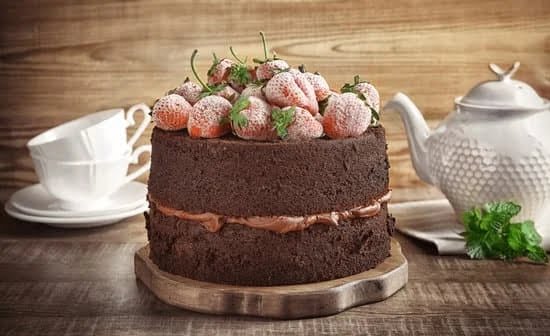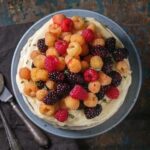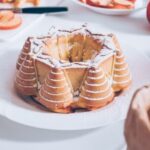Are you ready to add a touch of fiesta flair to your next cake? Decorating a fiesta cake is not only a delicious endeavor, but also a chance to embrace the fun and vibrant nature of this theme.
From the colorful layers to the festive decorations, a fiesta cake is sure to be the centerpiece of any celebration. In this article, we will guide you through the process of creating your very own fiesta masterpiece, filled with bright colors, intricate designs, and an abundance of creativity.
Before we dive into the exciting world of decorating, it is important to gather all the necessary supplies. To successfully decorate a fiesta cake, you will need cake layers – either baked from scratch or store-bought – along with frosting in various flavors and colors.
Be sure to have essential tools such as food coloring for tinting both batters and frostings, piping bags, and an assortment of decorative tips. Additionally, consider adding extra flair with decorative elements like sprinkles, edible flowers, and fondant in vibrant hues.
Now that you have gathered everything you need, it’s time to prepare your cake for decoration. This involves baking the cake layers, leveling them for an even surface, and properly cooling them before beginning the fun part – decorating. With these foundational steps in place, let’s move on to creating a colorful base that sets the tone for your fiesta-themed creation.
Gathering the Supplies
To successfully decorate a fiesta cake, it is important to gather all the necessary supplies beforehand. Here is a comprehensive list of everything you will need to bring your fiesta cake to life:
- Cake Layers: Depending on the size and shape of your desired cake, you will need enough cake layers to create the desired height and structure. It is recommended to use firm and dense cakes like vanilla or chocolate that can hold up well under the weight of decorations.
- Frosting: Choose a frosting flavor that complements the fiesta theme, such as vibrant colors like red, blue, or green. Cream cheese frosting or buttercream frosting work well for their versatile nature and ability to hold decorations.
- Food Coloring: To create a festive appearance, make sure to have bright and bold food coloring gel or liquid on hand. This will allow you to add vibrant hues to your batter and frosting.
- Piping Bags: Piping bags are essential for precise decorating techniques. Get a few disposable piping bags or reusable ones, depending on your preference.
- Decorating Tips: Invest in a variety of decorating tips in different shapes and sizes. This will give you versatility when creating different designs and patterns on your fiesta cake.
- Decorative Elements: Sprinkles, edible flowers, fondant shapes, and other decorative elements are essential for adding flair and charm to your cake design. Look for colorful sprinkles in various shapes and sizes that match the fiesta theme.
Having all these supplies ready will ensure smooth progress during the decorating process without any interruptions or delays.
| Supplies |
|---|
| Cake Layers |
| Frosting |
| Food Coloring |
| Piping Bags |
| Decorating Tips |
| Decorative Elements (sprinkles, edible flowers, fondant) |
Make sure to gather these supplies before starting the decorating process to ensure a seamless and enjoyable fiesta cake decorating experience.
Preparing the Cake
Before you can begin the exciting process of decorating your fiesta cake, it is essential to prepare the cake layers correctly. This step-by-step guide will help ensure that your cake turns out moist, level, and ready for all the vibrant decorations to come.
First and foremost, gather all the necessary ingredients for your cake batter. Depending on your preference, you can choose a classic vanilla or chocolate flavor or go for something more adventurous like a fruity option such as lemon or strawberry. Whatever flavor you decide on, always ensure that you have enough eggs, flour, sugar, butter or oil, leavening agents like baking powder or soda, and any additional flavorings.
Once you have everything in order, preheat your oven to the recommended temperature stated in your recipe. In most cases, this will be around 350°F (175°C). Be sure to prepare your cake pans by greasing and flouring them thoroughly to prevent sticking. Alternatively, parchment paper can also be used to line the bottoms of the pans.
Next comes preparing your batter. Follow your chosen recipe closely and combine all the ingredients according to its instructions. Mix until the batter is smooth and free of lumps. If desired, this is also an excellent time to add food coloring to achieve a specific look for your fiesta cake.
Divide the batter evenly between your prepared cake pans. To ensure even baking and uniform layers, gently tap each pan on a countertop surface a few times after pouring in the batter to remove any air bubbles.
Place both pans into your preheated oven and bake for the recommended time specified in your recipe. Once fully baked (you can use a toothpick inserted into the center of each layer – if it comes out clean with no wet batter clinging to it), remove from the oven and allow the cakes to cool in their pans for about 10 minutes.
Afterward, carefully remove the cakes from their pans and transfer them onto a wire rack to cool completely. This cooling process is crucial as it prevents the cake layers from crumbling or breaking when you begin decorating. It’s essential to ensure that your cake layers are entirely cooled before moving on to the next step.
Once your cake layers have cooled adequately, it’s time to level them. Use a serrated knife or a cake leveler to gently trim off any rounded tops or uneven edges. This step will help create a flat surface for stacking and frosting the layers, ensuring a beautifully presented fiesta cake.
With your perfectly leveled cake layers ready, you are now prepared to move on to the next stages of decorating your vibrant fiesta cake.
Creating a Colorful Base
When it comes to decorating a fiesta cake, one of the key elements is creating a colorful base that captures the lively and vibrant spirit of this theme. There are several techniques you can use to achieve this effect and make your cake truly stand out.
Using Multi-Colored Batters
One popular method for creating a colorful base is by using multi-colored batters. To do this, divide your cake batter into separate bowls and add food coloring to each bowl in different hues. You can choose colors that represent the traditional fiesta color palette, such as bright red, yellow, green, and blue. Once you have your colored batters ready, pour them into the pans in a random pattern or layer them to create beautiful and vibrant swirls of color.
Marbling
Another technique to consider is marbling. With marbling, you can create an eye-catching effect that resembles the patterns found in Mexican pottery. To achieve this look, start by pouring alternating spoonfuls of different colored batters into the pan. Then take a skewer or toothpick and gently swirl it through the batter to create streaks or swirls of color that blend together beautifully when baked.
Tinting the Batter with Bright Food Coloring
If multi-colored batters or marbling aren’t your style, you can always opt for tinting the batter with bright food coloring. This allows you to have a solid color base that still captures the essence of a fiesta celebration. Simply add drops of vibrant food coloring to your cake batter until you achieve the desired shade. Remember to start with just a few drops at first and gradually add more until you reach the intensity you desire.
Frosting and Filling the Cake
Frosting and filling play a crucial role in decorating a fiesta cake, as they not only add flavor but also contribute to the overall visual appeal. When choosing frosting and filling flavors for your fiesta cake, it’s important to keep in mind the vibrant and festive nature of this theme. Here are some tips on selecting the right flavors and achieving smooth and even frosting layers for your cake:
- Flavor Selection: To complement the fiesta theme, you can opt for bold and tropical flavors. Consider using flavors like mango, coconut, lime, or even a spicy chili chocolate filling. These flavors will add an exciting twist to your cake and enhance the fiesta atmosphere.
- Frosting Options: There are several frosting options that work well with a fiesta cake. You can go for classic buttercream frosting, which is versatile and easy to work with. Another option is cream cheese frosting, which pairs beautifully with tropical flavors and adds a tangy element to your cake. Whichever frosting you choose, ensure that it complements the flavors of your filling.
- Achieving Smooth Frosting Layers: To achieve smooth and even frosting layers on your fiesta cake, it’s important to start with a crumb coat. This involves applying a thin layer of frosting all over the cake to seal in any crumbs.
Once the crumb coat is applied, refrigerate the cake for at least 30 minutes before applying the final layer of frosting. Use an offset spatula or a bench scraper to create smooth edges and achieve an even coating of frosting. - Decorating with Fillings: You can also use fillings as decorative elements in your fiesta cake. For example, if you have multiple layers in your cake, consider adding different flavored fillings between each layer to add variety in taste and color. Make sure to spread the fillings evenly using an offset spatula or piping bag.
By choosing the right flavors and mastering the art of smooth frosting application, you can take your fiesta cake to the next level. Remember to have fun with different flavors and fillings, and don’t be afraid to experiment with vibrant colors that embrace the festive spirit of a fiesta celebration.
Fun with Piping
Decorating a fiesta cake is all about embracing the vibrant and lively spirit of a fiesta celebration. One of the best ways to create eye-catching designs on your cake is by diving into the world of piping. Piping allows you to add texture, dimension, and intricate patterns to your cake, making it truly stand out. In this section, we will explore different piping techniques and tips for creating stunning designs on your fiesta cake.
To get started with piping, you will need a variety of decorative tips that can create different shapes and patterns. Some popular options for fiesta cakes include rosettes, zigzags, and ruffles. Rosettes are perfect for adding elegant flower-like details to your cake, while zigzags can give your cake a fun and playful look. Ruffles are great for creating delicate borders or adding texture to certain areas of the cake.
Once you have chosen the decorative tips you want to use, fill a piping bag with frosting. It’s important to use the right consistency of frosting for each technique. For rosettes and ruffles, a stiffer frosting works best as it holds its shape well. On the other hand, for smooth zigzags or lines, a slightly softer frosting may be easier to work with.
To create beautiful rosettes, start by holding the piping bag at a 90-degree angle to the surface of your cake. Squeeze the bag while applying pressure evenly as you move in a circular motion clockwise or counterclockwise until you achieve the desired size for your rosette. Release pressure before pulling away from the surface to create a defined petal shape.
Zigzags are created by holding the piping bag at an angle and squeezing while moving back and forth in quick motions across the surface of your cake. This technique can be used to cover larger areas or create patterns such as chevron or waves.
Finally, ruffles can be made by holding the piping bag at a 45-degree angle to the surface of your cake and squeezing while moving the bag back and forth in a gentle wave-like motion. This technique is perfect for adding texture to borders or creating elegant ruffled layers.
Experiment with different combinations of piping techniques and tips to create unique designs that suit your fiesta theme. The key is to have fun and let your creativity shine through.
Adding Festive Decorations
When it comes to decorating a fiesta cake, the possibilities are endless. Adding festive decorations is a key step in enhancing the overall theme and creating a vibrant and lively look. There are several decorative elements that can be incorporated into the design of the cake to truly capture the essence of a fiesta celebration.
Sugar Cacti
One popular decorative element for fiesta cakes is sugar cacti. These can be made using a combination of green fondant or modeling chocolate, shaped into different cactus forms, and then covered with edible sanding sugar to create a realistic texture. These sugar cacti can be placed strategically on top of the cake or used as accents around the sides to add an extra layer of depth and visual interest.
Mini Piñatas
Another fun and playful addition to a fiesta cake is mini piñatas. These can be made using small cardboard boxes or hollowed out foam shapes decorated with brightly colored tissue paper or crepe streamers. They can then be filled with small candies or trinkets and attached to the cake using toothpicks or skewers. The mini piñatas not only add a festive touch but also serve as delightful party favors for guests to enjoy once the cake is served.
Edible Confetti
To further enhance the celebratory atmosphere, edible confetti can be sprinkled onto the cake’s surface for an added burst of color and texture. This confetti can be made from fondant cut into various shapes and sizes using cookie cutters, or it can even be made from colorful sprinkles mixed together to resemble confetti. Generously sprinkle this edible confetti across each layer, allowing it to land naturally while providing that joyful touch that will truly make your cake pop.
Mexican-inspired Patterns
Lastly, incorporating traditional Mexican patterns made from fondant or candy melts is an excellent way to pay homage to the fiesta theme. These patterns can be created using specially designed stencils, molds, or by using piping techniques with royal icing or melted candy melts. Opt for bright colors and intricate designs such as sugar skulls, papel picado motifs, or traditional Mexican embroidery patterns to add a touch of cultural authenticity to your cake.
By incorporating these festive decorations, such as sugar cacti, mini piñatas, edible confetti, and Mexican-inspired patterns made from fondant or candy melts, you can take your fiesta cake to the next level. These decorative elements not only add visual interest but also create a fun and vibrant atmosphere that perfectly captures the spirit of a fiesta celebration.
Remember to arrange these various decorations strategically on your cake and have fun while experimenting with different combinations and placements. The key is to let your creativity shine through and embrace the lively nature of the fiesta theme. So go ahead, adorn your masterpiece with colorful accents, highlight traditional elements, and prepare to impress your guests with a cake that truly embodies the spirit of a fiesta celebration.
Finishing Touches
Decorating a fiesta cake is all about the vibrant and lively spirit of the celebration. In this section, we will discuss the importance of paying attention to small details to elevate the overall presentation of your cake. Adding colorful borders, incorporating mini sombreros or traditional fiesta hats, and finalizing the creation with a personalized message or cake topper can take your fiesta cake to the next level.
One way to enhance the appearance of your fiesta cake is by adding colorful borders. Use brightly colored icing or fondant to create borders around each layer of the cake. You can even use piping bags with decorative tips to pipe intricate designs along the edges. The contrast between the colorful borders and the vibrant decorations on top of the cake will make it visually appealing and capture the essence of a fiesta.
Another option for adding a touch of authenticity to your fiesta cake is incorporating mini sombreros or traditional fiesta hats. These can be made from edible materials such as fondant or candy melts. Simply mold or shape them into small hats and place them strategically on top of your decorated cake. They will instantly add a festive element and make your cake more playful and fun.
Lastly, don’t forget about personalization. Adding a personalized message or cake topper can make your fiesta cake more meaningful and special. Write a heartfelt message in icing on top of the cake that reflects the occasion you are celebrating. Alternatively, you can use a decorative cake topper that represents something significant about the event or person being celebrated.
Conclusion
In conclusion, decorating a fiesta cake is a fun and exciting process that allows you to unleash your creativity and embrace the vibrant and lively spirit of a fiesta celebration. Throughout this article, we have explored the various steps involved in creating a stunning fiesta cake, from gathering the necessary supplies to adding the finishing touches.
By following the step-by-step instructions provided in this article, you can successfully bake and decorate a fiesta cake that will impress your guests. From preparing the cake layers and giving them a colorful base to frosting, filling, and piping, each step plays a crucial role in creating a visually appealing masterpiece.
Furthermore, we have discussed different decorations that can elevate the fiesta theme, such as sugar cacti, mini piñatas, edible confetti, and traditional Mexican patterns made from fondant or candy melts. These festive elements add an extra touch of excitement to your cake.
Remember to pay attention to small details when finishing your fiesta cake. Adding colorful borders, incorporating mini sombreros or traditional fiesta hats, and finalizing with a personalized message or cake topper can truly enhance the overall presentation.
So don’t be afraid to get creative. Let your imagination run wild as you decorate your fiesta cake. Embrace the vibrant colors, bold designs, and lively atmosphere associated with a fiesta celebration. With these tips and techniques at hand, you are now ready to embark on an unforgettable baking adventure in honor of this joyful theme. Happy decorating.
Frequently Asked Questions
How do you make a plain cake look fancy?
To make a plain cake look fancy, there are several techniques you can try. One approach is to use frosting or icing to add decorative designs or patterns on the cake’s surface. You can use a piping bag with different tips to create intricate flowers, swirls, or script writing.
Another idea is to incorporate edible decorations such as fresh fruits, chocolate shavings, or sprinkles that complement the flavor of the cake. Adding layers to the cake and filling them with flavored creams or fruit preserves can also elevate its appearance and taste. Finally, consider presenting the cake on a decorative serving stand or adding personalized cake toppers like candles or fondant cut-outs for a finishing touch.
What is in a fiesta cake?
A fiesta cake typically embodies the vibrant and festive spirit of Mexican cuisine and celebrations. It is often made with traditional flavors such as vanilla, cinnamon, or chocolate, which infuse richness into each bite. The cake itself may be light and fluffy if using sponge or chiffon recipes, allowing it to pair well with indulgent fillings like dulce de leche or creamy Mexican chocolate ganache.
Fiesta cakes often showcase colorful decorations inspired by Mexican folk art, including intricate sugar flowers, marzipan figures, and piped buttercream designs resembling papel picado (Mexican tissue paper banners). Other popular adornments might include fresh fruits like berries or tropical citrus slices that offer both visual appeal and a refreshing burst of flavor.
How do you pipe a ruffle cake?
Piping a ruffle cake involves using a pastry bag fitted with a petal tip to create delicate frills around the edges of each layer. To achieve this effect, start by preparing your frosting consistency – it should be medium-stiff but still easy to pipe smoothly. Begin piping from the bottom edge of the cake layer using gentle pressure and holding the bag at a 45-degree angle with the wide end of the tip touching the surface of the cake. Apply consistent pressure as you move your hand in an upward, wavy motion, creating a ruffled design that appears as thin overlapping layers.
Once you reach the top edge of the cake layer, release pressure and pull the tip away to complete the ruffle. Repeat this process around the entire circumference of each cake layer until achieving your desired effect. Consider using different colors or shades of frosting to create contrasting or ombré ruffles for an added visual interest.

Welcome to our cake decorating blog! My name is Destiny Flores, and I am the proud owner of a cake decorating business named Cake Karma. Our mission is to provide delicious, beautiful cakes for all occasions. We specialize in creating custom cakes that are tailored specifically to each customer’s individual needs and tastes.





